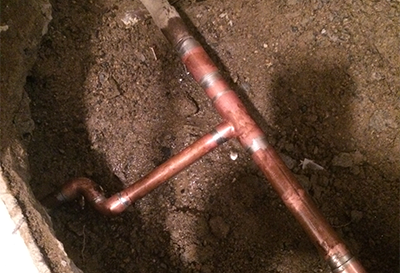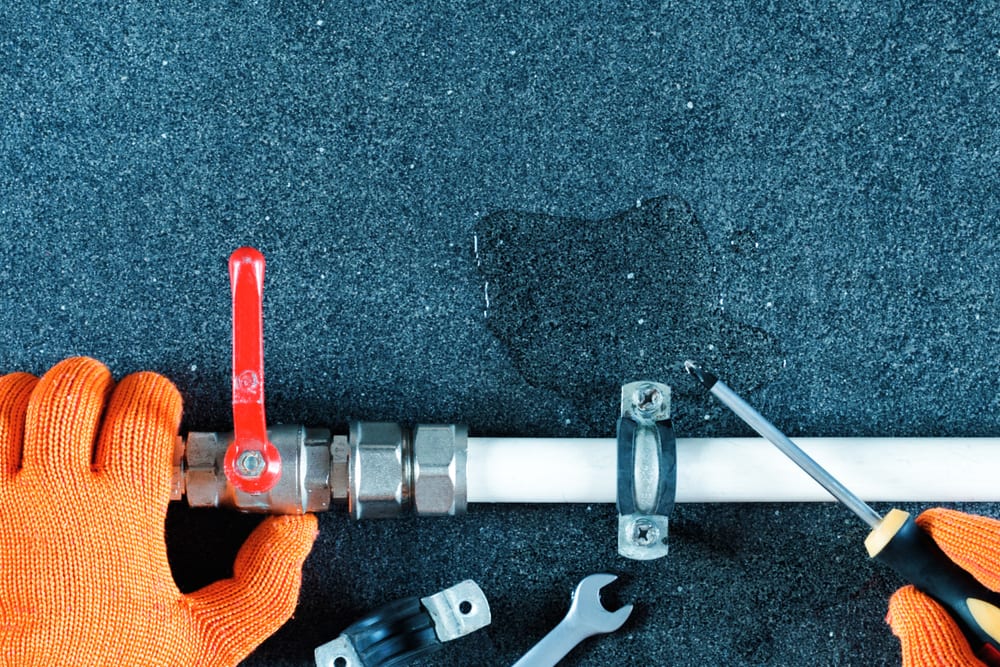6 Ways to Find Concealed Water Leakages in Your House
6 Ways to Find Concealed Water Leakages in Your House
Blog Article
In this article down the page you can locate more amazing advice in relation to Hacks to detect leaks.

Early detection of leaking water lines can minimize a possible disaster. Apart from saving you cash, it will decrease the aggravation and aggravation. The moment you find a leak, calling your plumber for repair services is the best option. Nonetheless, some little water leakages might not be visible. If you can not spot it with your nude eyes, here are some hacks that help.
1. Check Out the Water Meter
Examining it is a proven way that assists you discover leakages. If it relocates, that indicates a fast-moving leakage. This means you might have a slow-moving leakage that could even be below ground.
2. Check Water Consumption
Evaluate your water bills as well as track your water usage. As the one paying it, you ought to observe if there are any kind of disparities. If you detect sudden changes, regardless of your intake coinciding, it indicates that you have leaks in your plumbing system. Remember, your water bill should fall under the very same array on a monthly basis. An abrupt spike in your costs suggests a fast-moving leak.
Meanwhile, a steady increase on a monthly basis, despite having the exact same practices, reveals you have a sluggish leakage that's additionally gradually rising. Call a plumber to completely inspect your residential or commercial property, particularly if you feel a warm area on your floor with piping beneath.
3. Do a Food Coloring Examination
When it involves water consumption, 30% originates from bathrooms. Test to see if they are running correctly. Decrease flecks of food color in the container as well as wait 10 mins. If the color in some way infiltrates your bowl throughout that time without flushing, there's a leak between the container as well as dish.
4. Asses Outside Lines
Don't forget to inspect your exterior water lines too. Examination spigots by connecting a garden tube. Should water leak out of the link, you have a loose rubber gasket. Replace this and also guarantee all links are limited. If you've obtained a sprinkler system, it will certainly aid get it expertly took a look at and maintained every year. One small leakage can throw away lots of water and spike your water expense.
5. Check and Analyze the Circumstance
Home owners need to make it a habit to check under the sink counters and also inside closets for any kind of bad odor or mold and mildew development. These 2 red flags indicate a leak so prompt attention is required. Doing regular inspections, also bi-annually, can conserve you from a significant issue.
Inspect for discolorations and also deteriorating as a lot of home appliances and also pipelines have a life span. If you think dripping water lines in your plumbing system, do not wait for it to escalate.
Early discovery of leaking water lines can minimize a prospective calamity. Some small water leaks may not be visible. Inspecting it is a surefire means that helps you uncover leaks. One little leak can squander loads of water as well as surge your water costs.
If you think dripping water lines in your plumbing system, don't wait for it to rise.
How to Know If Your Home Has a Hidden Leak
Water Meter Reveals Inexplicable Water Usage
If you’d like to test whether or not there’s a leak somewhere in your home, you can do this using your water meter. Here is how to conduct the test:
Don’t use any water in your home for at least 30 minutes; this also means not turning on faucets or water-using appliances.
Go outside, and check your water meter for activity.
If your water meter shows that there was activity, even though no one was using any water, this proves that there is a leak in your home.Visible Mold or Mildew Growth
Leaks behind walls create moist, dark environments that allow mold and mildew to grow and thrive. Eventually, you might see mold growth forming on the wall closest to a hidden leak.
If mold is growing in an area that receives a high amount of moisture, such as a bathroom, it may simply be an indication that better ventilation is needed. However, if you see mold growth on a wall or the ceiling in an area where you would not expect, you probably have a hidden leak.
Musty, Mildew Odor
Sometimes you might not be able to see the mold or mildew that is growing as a result of a leak. However, the smell can give the problem away just as easily. If you catch a whiff of something musty, there’s a good chance that old water is collecting somewhere in your home that you can’t see.
Stained/Warped Walls, Ceilings, or Floors
When your home soaks up water, a variety of red flags can become visible, including ceiling stains, bubbling drywall, warped walls, and sagging floors. While these issues can be caused by excess humidity, they can also be signs that a pipe or plumbing connection has started leaking behind your walls.
Inexplicably High Water Bill
After a while, you get a general sense for what your water bill should be. If you own a pool or sprinkler system, your bill will tend to be higher during summer. However, if you receive a water bill that seems especially high, and you can’t figure out what caused it, then you may have a hidden leak somewhere that’s increasing your bill.
https://www.plumbingjoint.com/blog/2019/july/how-to-know-if-your-home-has-a-hidden-leak/

I recently found that content about Top leak detection hacks when doing a lookup on the search engines. Do you know anybody else who is fascinated by the subject? Feel free to share it. We value reading our article about Finding hidden leaks.
Report this page